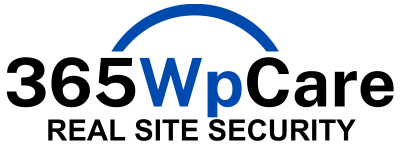WordPress has become a cornerstone of the online world, powering countless websites with its user-friendly interface and customizable features. However, its popularity also makes it a prime target for cybercriminals seeking to exploit vulnerabilities. Malware, short for malicious software, is a significant threat that can compromise the security and integrity of your WordPress website. In this guide, we’ll delve into the various types of malware that can affect WordPress sites and explore their potential impact on your online presence.
**1. Viruses: Overview: Viruses are perhaps the most widely recognized form of malware. They attach themselves to legitimate files and replicate when the infected file is executed. Impact on WordPress: While viruses are less common on WordPress sites due to its architecture, they can infect theme or plugin files, leading to unexpected behavior or unauthorized access.
2. Worms: Overview: Worms spread independently by exploiting vulnerabilities in software or by using infected files as hosts. They can replicate and spread rapidly. Impact on WordPress: Worms can exploit vulnerabilities in outdated plugins or themes, leading to the rapid spread of malware across multiple websites.
3. Trojans: Overview: Trojans disguise themselves as legitimate files or software, tricking users into executing them. Once activated, they can provide unauthorized access to cybercriminals. Impact on WordPress: Trojans can target specific files within your WordPress installation, granting hackers backdoor access to your site.
4. Ransomware: Overview: Ransomware encrypts your files, demanding a ransom for their release. It can lock you out of your own website until the ransom is paid. Impact on WordPress: Ransomware can paralyze your WordPress site, making it inaccessible to both you and your visitors until the ransom is paid.
5. Spyware: Overview: Spyware collects sensitive information, such as login credentials and personal data, and sends it to cybercriminals. Impact on WordPress: If your site is infected with spyware, sensitive user data, including login credentials, can be stolen and misused.
6. Adware: Overview: Adware displays unwanted advertisements or redirects users to malicious websites, often resulting in a poor user experience. Impact on WordPress: Adware can cause your website to display intrusive ads, leading to a decrease in user trust and engagement.
7. Keyloggers: Overview: Keyloggers record keystrokes, capturing sensitive information like passwords and credit card details. Impact on WordPress: Keyloggers can compromise the login credentials of your WordPress site, allowing hackers to gain unauthorized access.
8. Malvertising: Overview: Malvertising uses legitimate ad networks to spread malicious ads that can redirect users to harmful websites or deliver malware. Impact on WordPress: Malicious ads on your site can tarnish your reputation, harm your SEO, and potentially infect visitors’ devices.
9. Drive-by Downloads: Overview: Drive-by downloads automatically initiate the download of malicious software when a user visits a compromised website. Impact on WordPress: Drive-by downloads can infect your visitors’ devices and lead to security warnings from browsers, discouraging users from accessing your site.
10. Backdoors: Overview: Backdoors create hidden entry points for hackers to access your website even after security measures are taken. Impact on WordPress: Backdoors can give cybercriminals persistent access to your site, allowing them to maintain control and continue malicious activities.
Conclusion: Understanding the various types of malware and their potential impact on your WordPress website is essential for maintaining a secure online presence. To safeguard your site, adopt a multi-layered security approach, including regular updates, strong passwords, reputable security plugins, and a proactive monitoring strategy. By staying informed and taking proactive measures, you can effectively defend your WordPress website against the diverse threats posed by malware, ensuring a safe and trustworthy experience for both you and your visitors.
